Are you feeling overwhelmed by the variety of leather options at your disposal? This in-depth guide is a must-read for anyone looking to make informed choices about different leather products. Each leather type boasts unique advantages tailored to specific uses, ranging from the luxurious softness associated with calfskin to the unparalleled durability of full-grain leather. By understanding the distinctive characteristics and sources of high-quality leather, you can make selections that enhance the longevity and performance of your goods. This guide aims to help you determine the best leather type for your requirements, whether for shoes, jackets, or various accessories. Remember, choosing the wrong leather can lead to premature wear and unnecessary expenses, so let’s explore the different types and their ideal applications.
Discover the Varied Types of Leather and Their Distinctive Features
The broad spectrum of leather types available each comes with unique properties, particularly significant in the field of footwear manufacturing. Here’s a comprehensive overview of the characteristics that set each leather type apart:
| Leather Type | Main Characteristics |
|---|---|
| Full-grain | Unmatched quality, natural surface, ultimate durability |
| Top-grain | Sanded surface for refinement, good durability, budget-friendly |
| Split leather | Lower layer of hide, less durable, economical choice |
| Nubuck | Sanded top surface, soft and velvety feel |
| Suede | Soft, fuzzy texture with limited water resistance |
- Grain quality is a crucial factor in determining the durability of leather
- Surface texture greatly impacts both aesthetics and maintenance needs
- Thickness is essential in deciding the most appropriate applications
Gain Insights on Common Leather Types for Smart Selections
When selecting leather that meets your specific requirements, understanding the common varieties and their best applications is crucial:
| Type | Best Use |
|---|---|
| Calfskin | Perfect for high-end dress shoes and fine accessories |
| Cowhide | Best suited for durable boots and heavy-duty items |
| Pigskin | Ideal for budget-friendly accessories |
| Sheepskin | Excellent choice for soft goods and linings |
| Goatskin | Commonly used in gloves and lightweight accessories |
Exploring Exotic Leather Types and Their Unique Qualities
The intriguing realm of exotic leathers introduces a variety of unique characteristics and stunning appearances:
| Type | Properties |
|---|---|
| Alligator | Luxury items known for exceptional durability |
| Ostrich | Distinctive pattern and soft texture set it apart |
| Stingray | Remarkable durability and unique texture |
| Python | Flexible with unique scales that enhance character |
| Lizard | Known for fine texture and delicate patterns |
Products made from bonded leather consist of leather fibers combined with binding materials. Here’s what you need to know:
| Aspect | Detail |
|---|---|
| Composition | Derived from leather fibers blended with binding agents |
| Durability | Typically less durable than authentic leather |
| Cost | A more budget-friendly option for cost-conscious consumers |
| Usage | Frequently found in furniture and various accessories |
| Care needs | Requires minimal maintenance to maintain appearance |
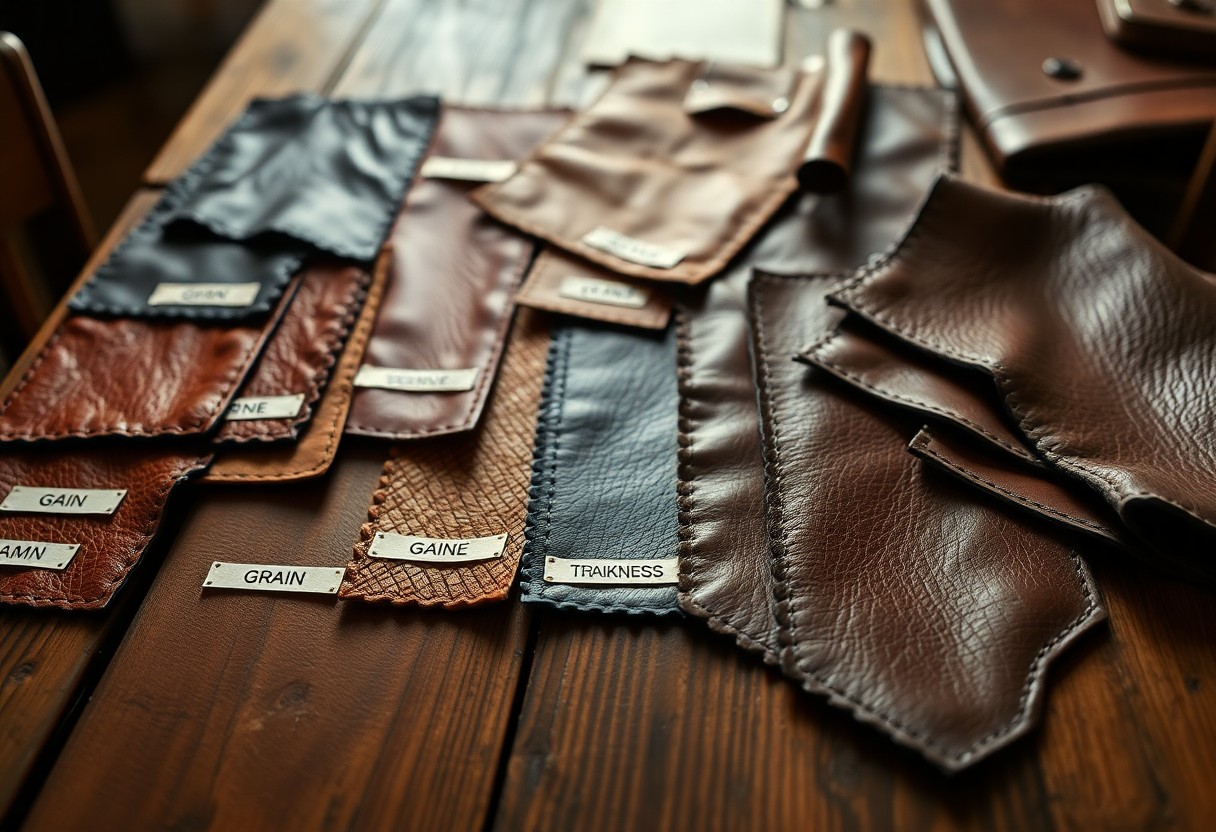
Critical Elements That Determine Leather Quality
While several factors influence leather quality, the primary considerations include animal source, hide preservation, tanning process, and finishing techniques. The durability and aesthetic appeal of your leather products greatly depend on these elements working together. Understanding these factors will empower you to make informed choices when selecting leather items that suit your needs.
Assessing Leather Quality Based on Animal Source
One of the most significant factors affecting leather quality is the animal source. The characteristics of your leather are closely linked to the age, breed, and living conditions of the animal from which it is sourced. For instance, calfskin offers extraordinary softness and flexibility compared to the coarser texture of full-grown cattle hide. Furthermore, exotic leathers such as those sourced from crocodiles provide unique textures and exceptional durability, making them highly coveted in luxury markets.
The Impact of the Tanning Process on Leather Quality
The tanning process is vital as it transforms raw hides into usable leather through various chemical treatments. For example, chrome tanning results in softer, more flexible leather, while vegetable tanning leads to firmer, more natural leather options. The skill and precision involved in the tanning process significantly affect the quality of the final leather product. Additionally, duration and temperature control during tanning are crucial for ensuring that the leather maintains its integrity. Inconsistencies can result in weak spots and uneven coloring, while rushed processes may yield leather that deteriorates quickly.
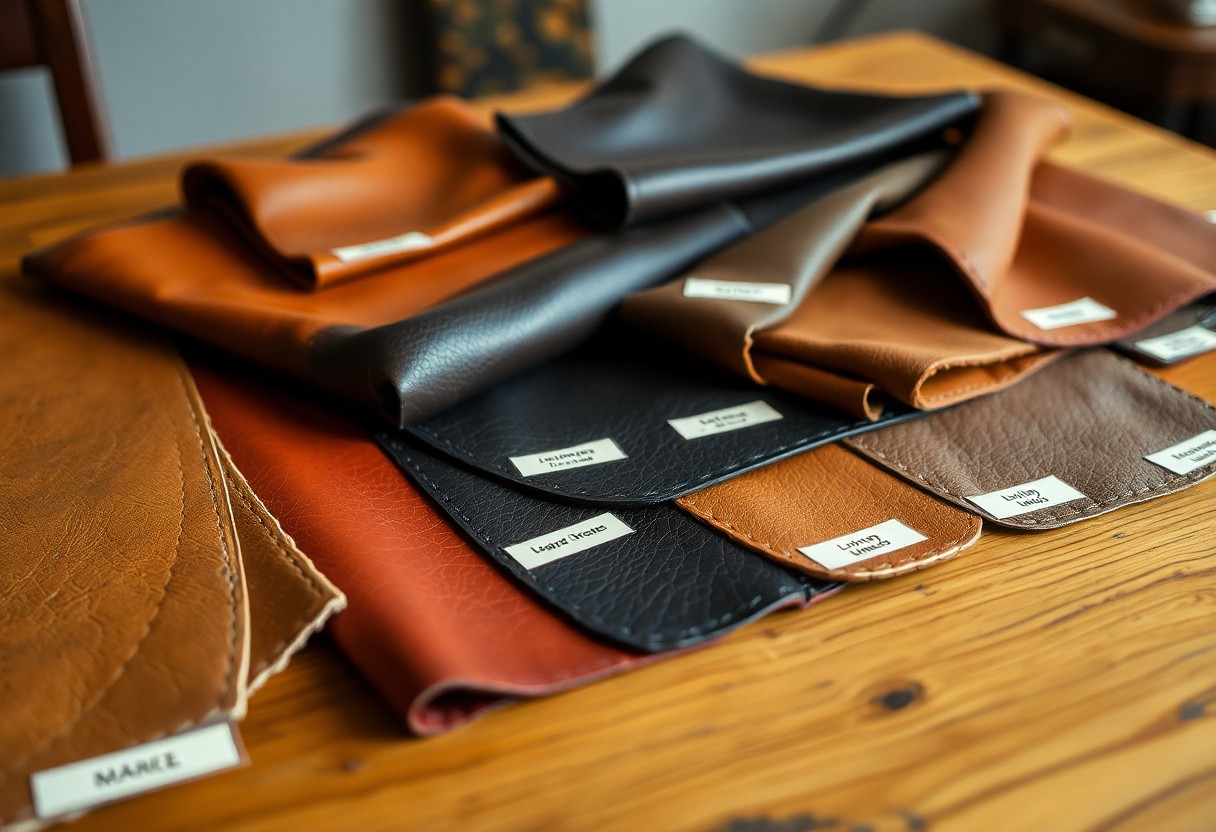
Essential Strategies for Identifying Premium Quality Leather
When assessing leather quality, adhere to these essential guidelines. Seek out full-grain leather that presents a consistent color and minimal surface imperfections. Inspect the grain pattern to ensure it appears natural and uniform. Genuine leather typically has a pleasing aroma and should feel smooth when touched. Moreover, the edges should be clean and well-finished. While price can often indicate quality, it shouldn’t be the only factor guiding your decision-making process.
Performing a Visual Inspection for Quality Evaluation
When examining leather, small details can lead to significant differences in quality. Look for natural markings and steer clear of leather that displays artificial grain patterns. Your leather should exhibit a uniform color throughout, devoid of noticeable discolorations or patches. The surface must be free of excessive scratches or scars, which could undermine the overall appearance and durability.
Employing Physical Testing Techniques to Assess Quality
Quality testing can be conducted using straightforward yet effective methods. For instance, bending the leather enables you to evaluate its flexibility; watch for any creasing patterns that may suggest inferior quality. Gently pressing your fingernail into the leather’s surface should create a temporary indentation, a hallmark of genuine leather. The leather should feel smooth and warm rather than cold or plastic-like.
It’s essential to recognize that physical testing can reveal a wealth of information about leather quality. Quality leather, when bent, should not crack or develop white marks. You can also perform a water drop test to evaluate authenticity—genuine leather will absorb water temporarily rather than allowing it to pool on the surface. A flame test, which should only be conducted by professionals, can also verify the leather’s authenticity.
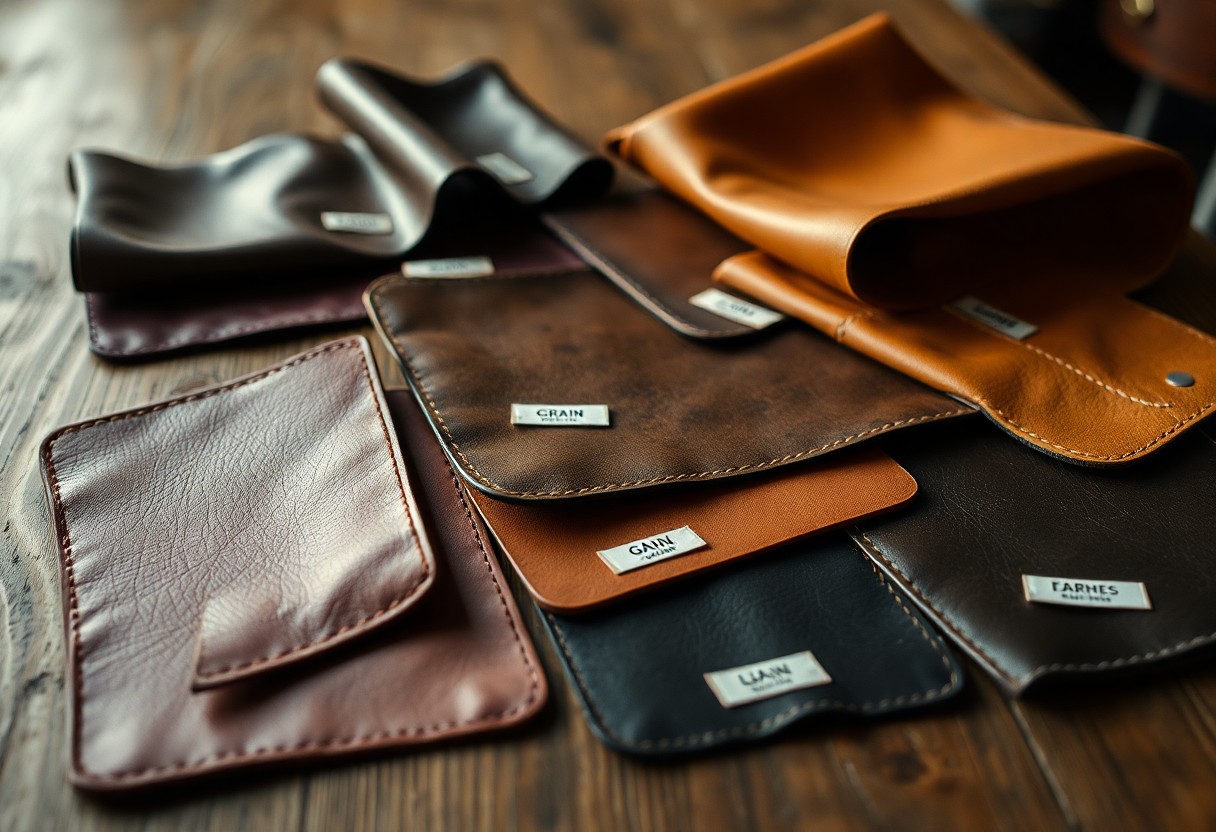
Your Comprehensive Step-by-Step Guide to Proper Leather Care
Unlike synthetic materials, leather demands specialized care to maintain its quality and extend its lifespan. Regular maintenance is vital for your leather items to avert damage and preserve their aesthetic appeal.
| Basic Care | Advanced Care |
| Leather cleaner Soft brush Microfiber cloth |
Leather conditioner Weather protector Leather polish |
Efficient Cleaning Techniques for Leather Goods
To clean your leather items effectively, begin with a dry brush to remove surface dirt. Always test any cleaning product on a small, hidden area first. When applying leather cleaner, use a soft cloth and work in gentle circular motions, ensuring not to saturate the leather with excess water, which can cause damage.
Protection and Proper Storage Strategies for Leather
When storing your leather items, careful consideration is essential. Ensure they are kept in a cool, dry location away from direct sunlight to prevent fading. Applying leather conditioner every 3-6 months is advisable to avoid cracking and to sustain the leather’s natural flexibility.
Your leather care routine’s success relies on consistent application. Protect your items from water damage by utilizing a high-quality waterproofing product. Regular conditioning helps maintain the leather’s natural oils, while proper storage prevents deformation and color fading.
Evaluating the Advantages and Disadvantages of Various Leather Types
To aid in making informed decisions about leather products, here’s a detailed comparison of different leather types and their features. Each type has unique advantages and drawbacks that impact their suitability for various applications.
| Pros | Cons |
|---|---|
| Full-grain leather: unmatched durability | Higher price point, may display all natural marks |
| Top-grain leather: smooth finish, water-resistant | Not as durable as full-grain alternatives |
| Split leather: affordable and flexible | Lower quality, less durable than others |
| Nubuck: sophisticated appearance, soft texture | Requires frequent maintenance to maintain its aesthetic |
| Suede: versatile and comfortable | Prone to staining, difficult to clean |
Examining Durability and Longevity Across Different Leather Types
There is significant variability in how various leather types age and wear over time. Full-grain leather can last for decades with proper care, while split leather might need replacement after just a few years of regular use due to lower durability.
Cost Considerations When Selecting Leather
Leather prices can vary widely based on quality and source. Premium full-grain leather can be 5-10 times more expensive than split leather alternatives, making it crucial to balance your budget with your desired quality level.
It’s essential to note that investing in higher-quality leather often results in better value over time, as these materials maintain their appearance and structural integrity far longer than their lower-quality counterparts.
Adapting Maintenance Requirements to Leather Quality
A clear relationship exists between leather quality and its maintenance needs. Top-grain and full-grain leathers generally require less frequent but more specialized care, which helps to preserve their characteristics and appearance for as long as possible.
Moreover, each leather type demands specific cleaning products and techniques. Your maintenance routine should align with the type of leather you own to ensure optimal preservation and longevity of your investment.
Understanding the Common Uses and Applications of Leather
With insights into various leather types, you’ll find that each serves distinct purposes based on its unique properties and durability levels. The type of leather you select can significantly impact the performance of the final product, making it essential to match the right leather with its intended use.
Fashion and Accessories: The Realm Where Leather Excels
In the fashion industry, applications range from luxurious high-end goods to everyday essentials. For instance, you’ll find calfskin used in premium shoes and handbags, while exotic leathers like crocodile and stingray are featured in exclusive designer pieces. Your leather accessories may include wallets, belts, and watch straps, each crafted from specific leather types to ensure optimal functionality and style.
Furniture and Upholstery: Prioritizing Durability
In the furniture sector, full-grain and top-grain leathers are the most popular choices. Upholstered pieces utilizing these resilient materials can endure daily use while developing a beautiful patina over time, enhancing their visual appeal.
When selecting leather for your furniture, various factors must be considered. You’ll want to evaluate durability ratings, as full-grain leather can last up to 25 years with proper care. The choice of leather impacts both aesthetic quality and longevity, ensuring that your investment remains worthwhile.
Industrial Applications: The Demand for High-Performance Materials
In industrial settings, leather must meet high-performance material requirements. Specialized leather types are used in automotive interiors, protective gear, and heavy machinery components, where durability is critical.
To ensure optimal performance in these industrial applications, your leather choices must comply with specific standards. Safety-rated leathers are employed in protective equipment, while specialized treatments improve resistance to heat, chemicals, and wear in industrial machinery.
Empower Yourself to Make Informed Choices About Leather
With the knowledge gained from this guide, you are now better equipped to make informed decisions regarding various types of leather based on your unique needs. Understanding the characteristics of leather will enable you to select the ideal material for your footwear. From the versatility of calfskin to the exceptional properties of exotic leathers, you can now weigh durability, comfort, and style against your specific requirements. Each leather type offers distinct benefits, allowing you to align these qualities with your intended use. Whether you’re searching for rugged cowhide boots or elegant dress shoes made from calfskin, you can confidently select the perfect leather to fit your preferences.
Frequently Asked Questions About Different Leather Types
Q: What differentiates calfskin from full-grown cow leather?
A: Calfskin is sourced from young cattle under one year old, providing a softer, more supple texture with finer pores. In contrast, cow leather comes from adult animals, resulting in thicker and sturdier leather with more pronounced markings. Calfskin is often preferred for high-quality dress shoes, while cow leather is commonly utilized for work boots and more economical footwear options.
Q: What makes shell cordovan stand out among leather types?
A: Shell cordovan is derived from the muscle membrane beneath the skin of a horse’s rump. This distinct leather features unique traits: it doesn’t crease but forms rolls, has a dense shiny surface, and is remarkably durable. The processing of this leather involves turning it inside out, setting it apart from traditional leather types.
Q: How do exotic leathers, like crocodile and stingray, differ in properties and uses?
A: Crocodile leather is soft, flexible, and harvested from the belly and sides of the animal, making it a luxurious choice that often requires CITES certification. Conversely, stingray leather is known for its extraordinary hardness and durability but can be more difficult to work with. Stingray shoes are generally crafted as wholecuts due to the material’s ability, allowing stitching only between its hard “pearls.”
The article Guide to the different types of leather characteristics and uses appeared first on My Shoes Finder
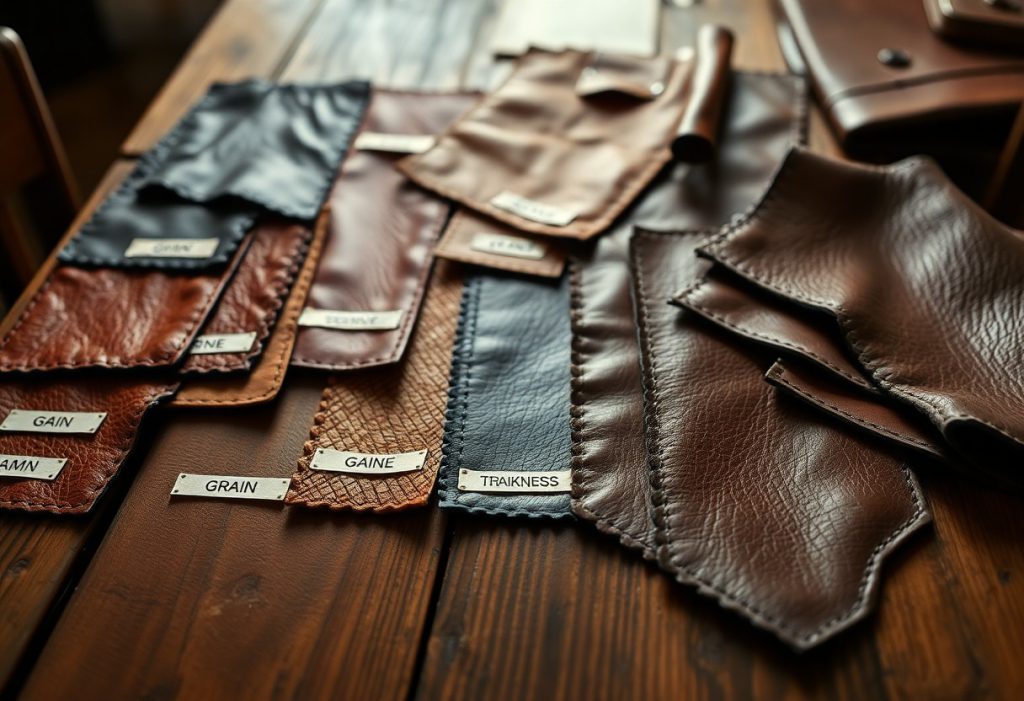
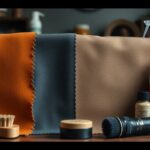
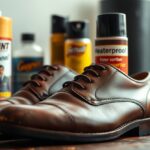



Your exploration of the various types of leather and their respective advantages is indeed timely, especially considering the overwhelming choices available in today’s market. As someone who has spent considerable time researching leather goods for both personal and professional purposes, I can attest that the decision-making process can be as complex as the materials themselves.